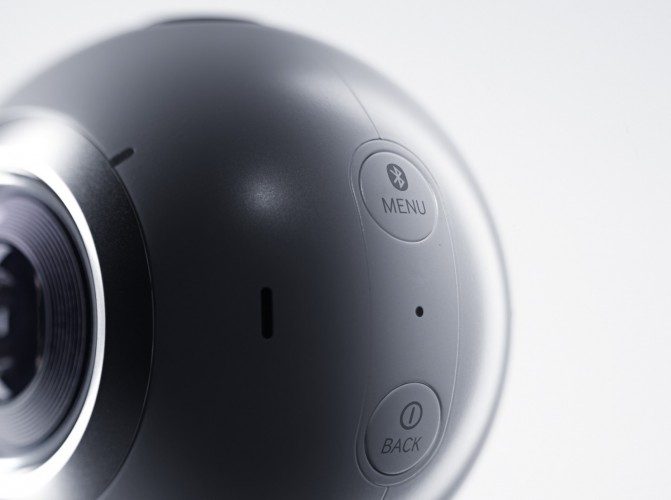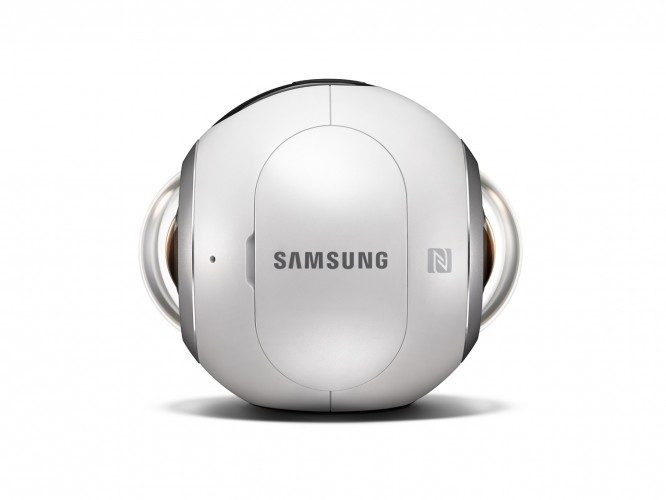Samsung’s Gear 360 launched today at the company’s Unpacked event, so what exactly is this diminutive immersive capture device capable of? Here are the official specifications direct from Samsung and whilst some impress, others leave a little to be desired.
The Gear 360 is unashamedly targeted as a consumer product. No high-flying pro-sumer technical specifications here, and none should be expected from a device which must aim for a price point attractive to casual users. Nevertheless, the spherical 360 camera packs quite a punch for a device so small.
See Also: A Tour of Samsung’s New Gear 360 Camera in 9 Hi Res Images
Starting with the highs, with Gear 360 you get dual, opposed camera sensors capable of capturing 3840×1920 for a resulting combined 7776×3888 frame. The sensors themselves are 15 megapixel CMOS varieties mounted with fish-eye lenses, it contains a 1350mAh lithium ion battery and it all weighs only 153g sans tri-pod – in a package that measures just 66.7×56.2x60mm. What’s more, the device packs handles encoding using the latest H.265 (aka HEVC) Video Codec – which means video will be crunched extremely effectively.
However, the device disappoints on capture rate. Those impressive 7776×3888 resolution frames can only be captured at up to 30 frames per second. And whilst there is still a running debate on how comfortable linear video is when viewed inside VR at a lower frame rate than the headset, it’s certainly not ideal. Furthermore, the 128GB SD Card limit seems potentially low. That said, HEVC can work wonders with high resolution video so perhaps we’ll reserve judgement on that one.
So, on the whole an impressive package perhaps let down by frame rate issues. No word just yet on price, but Samsung are aiming for a Q2 2016 delivery.
Here are the raw specs for reference:
- Camera: Two CMOS 15 megapixel fisheye cameras Image Processor DRIMe5s
- Video: MP4 (H.265) – Dual Lens: 3840×1920 (30fps)
- Image: JPEG – Dual Lens: 30M (7776×3888)
- Audio Codec: MP3/AAC/AAC+/eAAC+Format: MP3, M4A, AAC, OGG
- Memory (You mean storage -Ed): microSD card (Up to 128GB)
- Features: Display- 0.5” (72 x 32) PMOLED
- Shooting mode: Video, Photo, Time Lapse Video, Looping Video
- Camera mode: Dual/Single Lens modeCamera Setting – Sharpness, White Balance, HDR, EV, ISO limit, Wind cut IP53 Certified Dust and Water Resistant
- Samsung Services: Samsung Gear 360 App, PC S/W (Gear 360 ActionDirector)
- Connectivity: WiFi 802.11 a/b/g/n/ac (2.4/5GHz)WiFi Direct, BT v4.1USB 2.0NFC
- Sensor: Accelerometer, GyroscopeDimension 66.7×56.2×60 mm
- Weight: 153g (including battery)
- Battery: 1,350mAh Li-ion









